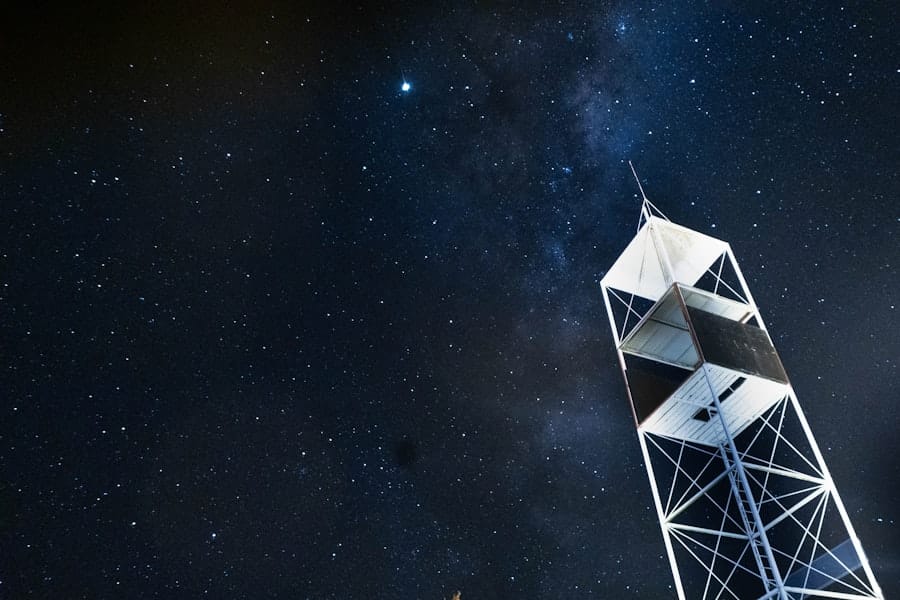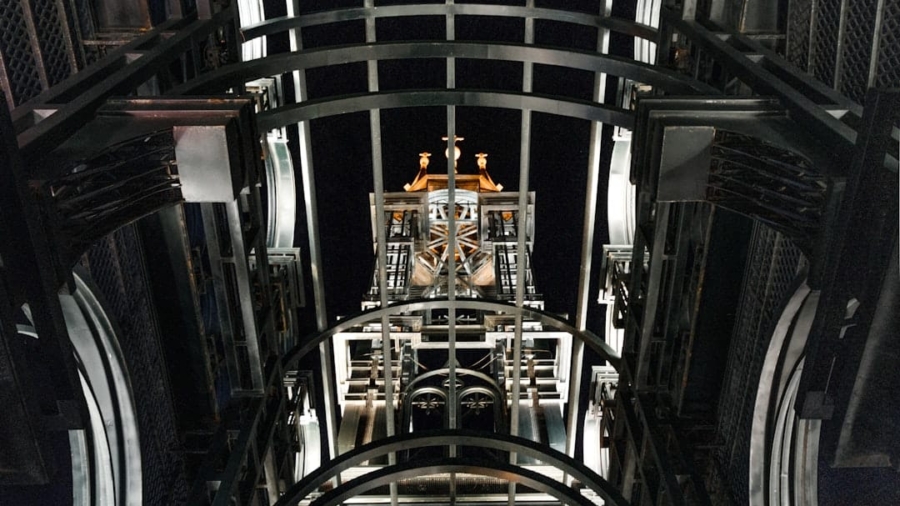The James Webb Space Telescope (JWST) represents a monumental leap in our quest to understand the universe. Launched on December 25, 2021, this space observatory is a collaborative project between NASA, the European Space Agency (ESA), and the Canadian Space Agency (CSA). Designed to succeed the Hubble Space Telescope, JWST is equipped with advanced technology that allows it to observe the cosmos in infrared wavelengths, which are crucial for studying celestial phenomena that are often obscured by dust and gas.
Its primary mission is to explore the formation of stars and galaxies, investigate the atmospheres of exoplanets, and delve into the origins of life itself. The JWST’s capabilities extend far beyond those of its predecessor.
5 meters in diameter—more than two and a half times larger than Hubble’s—JWST can capture light from some of the most distant objects in the universe.
This allows astronomers to peer back in time, observing light that has traveled billions of years to reach us. The telescope’s instruments are designed to detect faint signals from the early universe, providing insights into cosmic events that occurred shortly after the Big Bang. As such, JWST is not just a tool for observation; it is a time machine that enables scientists to unravel the mysteries of our universe’s past.
Key Takeaways
- The James Webb Space Telescope (JWST) is a revolutionary space observatory designed to study the universe in infrared wavelengths.
- Design and development challenges for the JWST included creating a sunshield to protect the telescope from the sun’s heat and developing a complex deployment process.
- The JWST was successfully launched in December 2021 and deployed in space, marking a major milestone in space exploration.
- Early operational challenges, such as aligning the telescope’s mirrors, were overcome, and the JWST began making significant scientific discoveries.
- The JWST has already made important contributions to our understanding of the universe, including studying exoplanets and distant galaxies.
Design and Development Challenges
The design and development of the James Webb Space Telescope were fraught with challenges that tested the limits of engineering and scientific ingenuity. One of the most significant hurdles was the telescope’s size and complexity. Unlike Hubble, which was designed to be serviced in orbit, JWST was intended to operate autonomously at a location known as the second Lagrange point (L2), approximately 1.5 million kilometers from Earth.
This remote position necessitated a design that could withstand extreme temperatures and radiation while maintaining precise alignment and functionality over many years. Another major challenge was the deployment mechanism of JWST. The telescope had to be folded into a compact configuration for launch, which required intricate engineering solutions to ensure that it could unfold correctly once in space.
The deployment sequence involved over 100 individual steps, including the unfolding of its sunshield, mirror segments, and scientific instruments. Each step had to be meticulously planned and tested to avoid catastrophic failures. Engineers conducted numerous simulations and tests on Earth to ensure that every component would function as intended in the harsh environment of space.
Launch and Deployment

The launch of the James Webb Space Telescope was a highly anticipated event, marked by years of preparation and delays. It was launched aboard an Ariane 5 rocket from the Guiana Space Centre in French Guiana. The choice of Ariane 5 was strategic; this heavy-lift rocket is known for its reliability and capability to deliver payloads into precise orbits.
The launch itself was a momentous occasion, celebrated by scientists and space enthusiasts worldwide who had invested years of effort into bringing JWST to fruition. Once in space, the deployment phase began—a critical period that would determine the success of the mission. The telescope’s sunshield, which is about the size of a tennis court, was deployed first to protect its instruments from solar radiation.
This was followed by the unfolding of its segmented mirror, which required precise coordination to ensure that each segment aligned correctly. The entire deployment process took approximately two weeks, during which engineers monitored every step closely from mission control. The successful deployment marked a significant milestone, as it confirmed that JWST was ready for its scientific mission.
Early Operational Challenges
Despite the successful launch and deployment, JWST faced several early operational challenges that tested its systems and capabilities. One of the initial hurdles was calibrating its instruments to ensure they were functioning optimally. Each of JWST’s four main scientific instruments—the Near Infrared Camera (NIRCam), Near Infrared Spectrograph (NIRSpec), Mid-Infrared Instrument (MIRI), and Fine Guidance Sensor/Near InfraRed Imager and Slitless Spectrograph (FGS/NIRISS)—required extensive calibration to achieve precise measurements.
This process involved taking test images and spectra, adjusting settings, and fine-tuning each instrument’s performance. Additionally, engineers encountered unexpected issues with the telescope’s mirror alignment. The primary mirror consists of 18 hexagonal segments that must work in unison to create a single coherent image.
During initial observations, some segments were found to be misaligned, leading to blurry images. This required a series of adjustments known as “segment phasing,” where each mirror segment was carefully repositioned using actuators to achieve optimal focus. The successful completion of this process was crucial for ensuring that JWST could deliver high-quality scientific data.
Scientific Discoveries and Contributions
Since becoming operational, the James Webb Space Telescope has made groundbreaking scientific discoveries that have significantly advanced our understanding of the universe. One of its first major achievements was capturing stunning images of distant galaxies, revealing intricate structures and star formation processes that had never been observed before. For instance, JWST’s observations of galaxy clusters have provided insights into how these massive structures influence the formation of galaxies within them.
Moreover, JWST has made significant contributions to exoplanet research by analyzing their atmospheres for signs of habitability. By observing transits—when an exoplanet passes in front of its host star—JWST can detect changes in starlight as it filters through the planet’s atmosphere. This has allowed scientists to identify key molecules such as water vapor, carbon dioxide, and methane in exoplanetary atmospheres, providing clues about their potential for supporting life.
These findings are not only exciting but also pave the way for future studies aimed at identifying potentially habitable worlds beyond our solar system.
Lessons Learned for Future Space Missions

The development and operation of the James Webb Space Telescope have yielded valuable lessons for future space missions. One key takeaway is the importance of rigorous testing and validation processes throughout all stages of development. The challenges faced during deployment underscored the necessity for comprehensive simulations and real-world testing to anticipate potential issues before they arise in space.
This approach can help mitigate risks associated with complex systems and ensure mission success.
The partnership between NASA, ESA, and CSA exemplifies how pooling resources, expertise, and technology can lead to remarkable achievements in space exploration.
Future missions can benefit from this collaborative model by fostering partnerships across nations and institutions, thereby enhancing scientific capabilities and expanding our understanding of the cosmos.
Impact on Astrophysics and Space Exploration
The impact of the James Webb Space Telescope on astrophysics and space exploration is profound and far-reaching. By providing unprecedented views of the universe in infrared wavelengths, JWST has opened new avenues for research across various fields of astronomy. Its ability to observe distant galaxies allows scientists to study cosmic evolution over billions of years, shedding light on how galaxies formed and evolved after the Big Bang.
Furthermore, JWST’s contributions extend beyond traditional astrophysics; it has implications for planetary science as well. By investigating exoplanet atmospheres, JWST is at the forefront of efforts to understand planetary habitability and the potential for life beyond Earth. This research not only enriches our knowledge of other worlds but also informs our understanding of Earth’s own climate and atmospheric processes.
Conclusion and Future Prospects
As we look ahead, the James Webb Space Telescope stands poised to revolutionize our understanding of the universe for years to come. Its advanced capabilities will continue to yield groundbreaking discoveries across various domains of astronomy, from studying the formation of stars and galaxies to exploring the atmospheres of distant exoplanets. The data collected by JWST will undoubtedly inspire new theories and research questions that will shape future scientific endeavors.
Moreover, JWST serves as a testament to human ingenuity and collaboration in space exploration. The lessons learned from its development will inform future missions, ensuring that we continue to push the boundaries of what is possible in our quest to explore the cosmos. As we embark on this new era of astronomical discovery, one thing is certain: the James Webb Space Telescope will remain a cornerstone of our efforts to unravel the mysteries of the universe for generations to come.
In exploring the advancements and lessons from the James Webb Space Telescope, it’s fascinating to consider how technology continues to push boundaries in various fields. A related article that delves into cutting-edge technology is “Unlock a New World of Possibilities with Samsung Galaxy Z Fold4.” This piece highlights the innovative design and capabilities of the Samsung Galaxy Z Fold4, showcasing how modern technology is transforming user experiences. Just as the James Webb Space Telescope represents a leap forward in space exploration, the Galaxy Z Fold4 exemplifies significant progress in consumer electronics. For more insights, you can read the full article here.
FAQs
What is the James Webb Space Telescope (JWST)?
The James Webb Space Telescope (JWST) is a large, space-based observatory that is set to be the premier observatory of the next decade. It is a collaboration between NASA, the European Space Agency (ESA), and the Canadian Space Agency (CSA).
What are the main goals of the James Webb Space Telescope?
The main goals of the JWST are to study the formation of the first galaxies, stars, and planets, to understand the origins of life, and to study the atmospheres of exoplanets.
What are some of the key lessons learned from the development of the James Webb Space Telescope?
Some of the key lessons learned from the development of the JWST include the importance of thorough testing and verification, the need for effective project management and communication, and the challenges of managing a complex, international collaboration.
What are some of the technical challenges faced during the development of the James Webb Space Telescope?
Some of the technical challenges faced during the development of the JWST include the design and construction of its large, segmented mirror, the development of its sunshield to protect it from the heat of the sun, and the integration of its various scientific instruments.
What are some of the anticipated scientific breakthroughs that the James Webb Space Telescope could enable?
The JWST is expected to enable a wide range of scientific breakthroughs, including the discovery of new exoplanets, the study of the atmospheres of exoplanets, the observation of the formation of the first galaxies, and the study of the origins of life.

